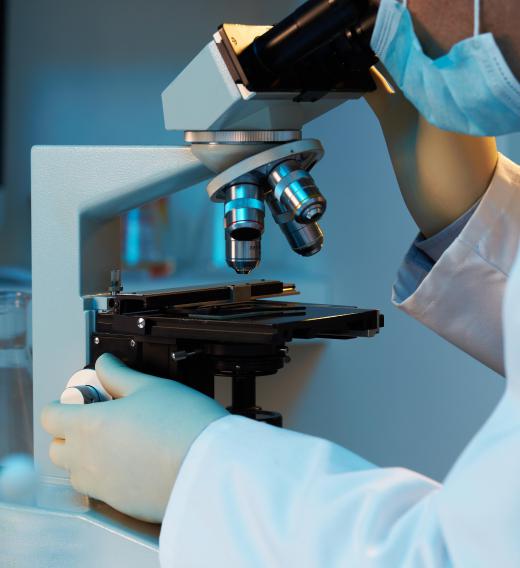What are Spicules?
 Mary McMahon
Mary McMahon
The word “spicule” describes a pointed or needlelike structure. It is used in several different contexts in the sciences. Spicules can be observed on a microscopic and a macroscopic level, everywhere from the ocean floor to the Sun. The type of spicule under discussion is usually clear from the context of the discussion.
In biology, spicules are used by many invertebrate animals to support themselves and strengthen their skeletal structure. They are composed of a variety of materials, depending on the organization making the spicule, and they can be found in a variety of locations. Sponges are a classic example of an organism which uses spicules. Upon magnification, the tiny crystalline structures can be seen arrayed in a variety of patterns. Symmetry is often exhibited, and different sponge species can have different arrays.

Nematodes also sometimes have spicules, depending on the species. Even vertebrates such as frogs may develop these structures. Examination under a microscope is usually necessary to identify a spicule, as these structures are typically very small when they are found on animals. The function of the spicules also varies, with some providing support, others providing traction, and others serving a function in the reproductive tract, for example.
On the other end of the scale is the solar spicule, a burst of plasma which can explode from the surface of the Sun at an extremely rapid rate. The spicule is usually accompanied with rapid fluctuation in the Sun's magnetic field, and it can be viewed with a high powered telescope or similar observing instrument, with some of the best images coming from devices in orbit. Solar spicules can be around 300 miles (500 kilometers) wide, illustrating how impressive they are, and how distant the Sun is from Earth, as people cannot see them with their naked eyes, even were they to risk permanent eye damage by staring directly at the Sun.
Several hypotheses have been developed to explain how and why solar spicules form, to learn more about the Sun and similar stars. As of 2009, there was no firm consensus among astronomers about these tremendous releases of energy, suggesting that more observation is needed, along with study from probes which could take readings to gather information about the conditions on and around the Sun. Such observations can be challenging to collect, because the Sun can easily damage or destroy probes which get too close to its extremely hot and highly charged surface.
AS FEATURED ON:
AS FEATURED ON:











Discussion Comments
This article got me wondering about whether or not humans have any spicules anywhere. I have never heard the term used before on any part of the body.
Since someone mentioned calcareous spicules, my immediate thought is that maybe our bones have spicules to help support us. At least to me it would make sense. Whenever you break a bone, it sort of splinters. Maybe spicules are what cause that.
Does anyone know if my theory is right? Are there any other human body parts that have spicules, and what do they do? I'd also be interested to hear about some of the other places you can find spicules.
When I was taking astronomy in college we got to see a set of solar spicules form in person. Part of our class was to go to the observatory during the day to look at the sun. There is a special covering they can put over the telescope lens to lessen the light intensity to a point where you can safely look at the sun.
At the time, none of us knew anything about solar spicules or how they formed. Our professor looked through the telescope and spotted some forming and gave us a chance to look at them. They lasted for about 5 minutes before they disappeared. It was a very neat experience overall.
@jmc88 - Luckily we just finished talking about sponges in my biology class, and I had the same question. My teacher looked it up and said that spicules are usually made from calcium or silicon (sand). The spicules are really just cells or groups of cells that are very rigid and can provide support to the sponge. The sand would be easy to get in any type of environment. I assume the calcium would probably come from the rocks near where the sponge lives.
Are there any plant or animal species that use spicules for protection? I don't know how large they can potentially get, but I was thinking that if something ate a plant or animal that had sharp spicules, it would bother the predator and protect the thing being eaten.
I remember learning about sponge spicules when I took high school biology, but I never realized the term could be used for anything that was needle shaped.
In sponges, what make up the spicules? I don't remember everything about sponges, but I know their digestive system is very primitive, so I would doubt the materials would all come from that. I was thinking that since they are usually in salt water, maybe the spicules are formed from grains of salt. That wouldn't explain the few species of freshwater sponges, though. Does anyone here know for sure?
Post your comments